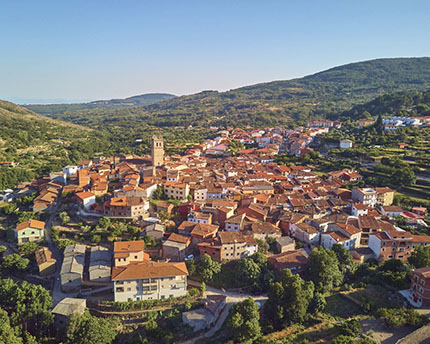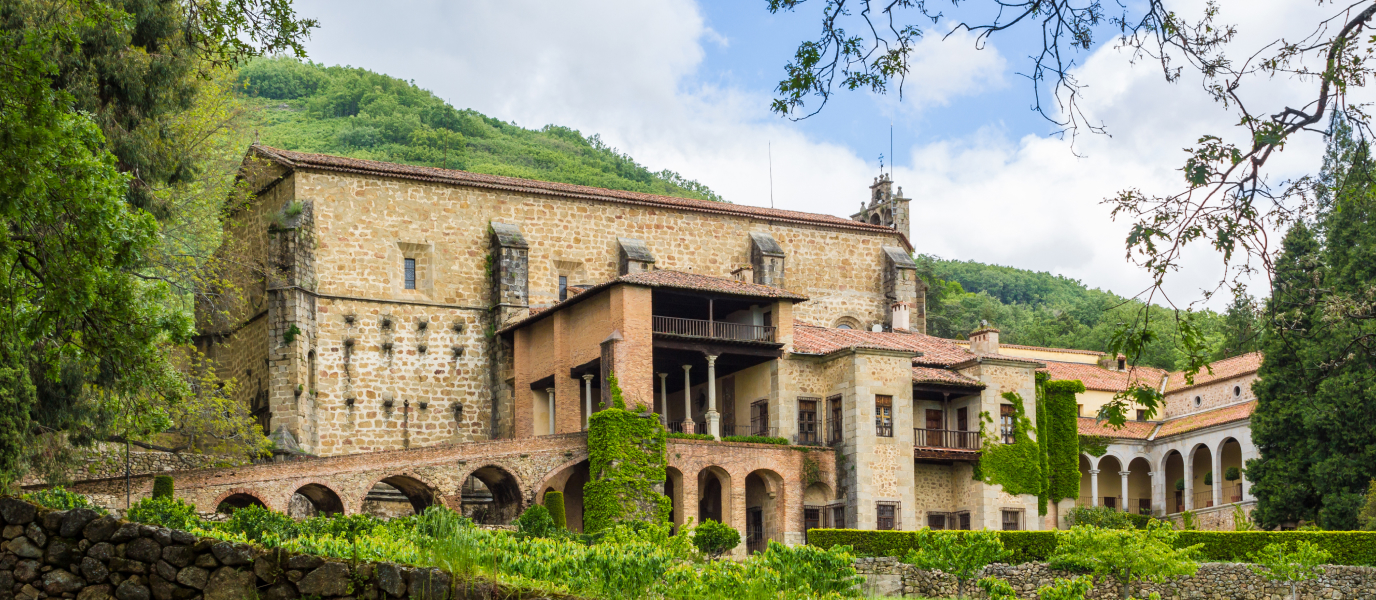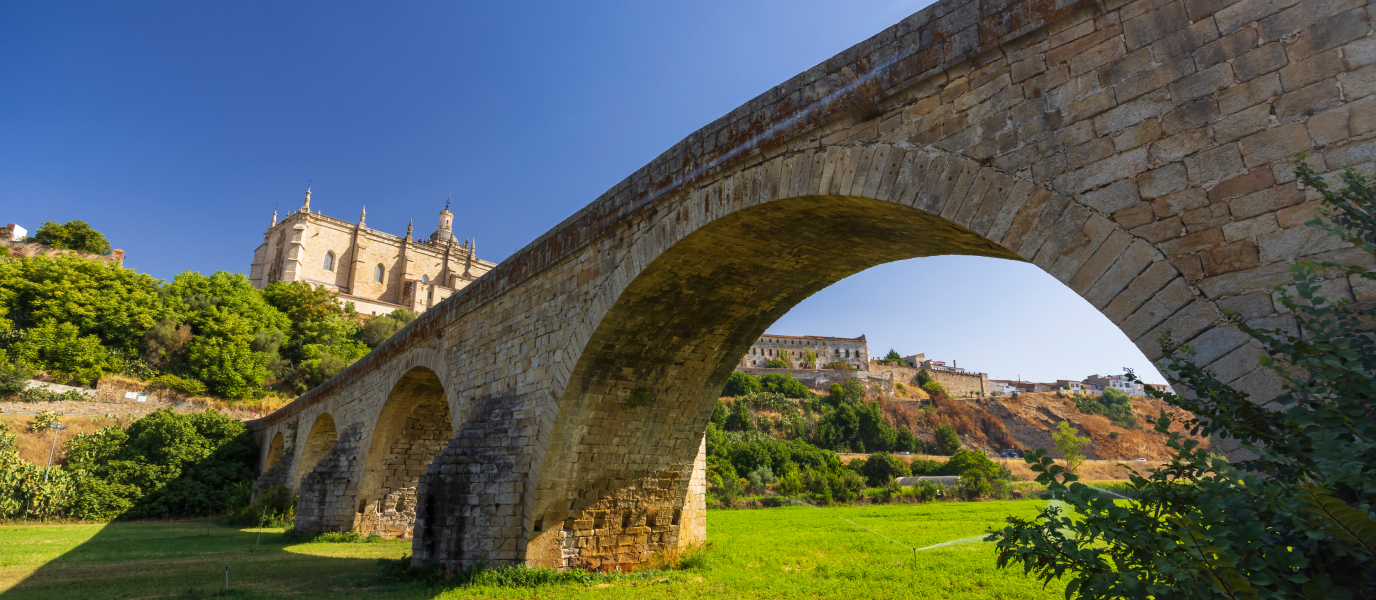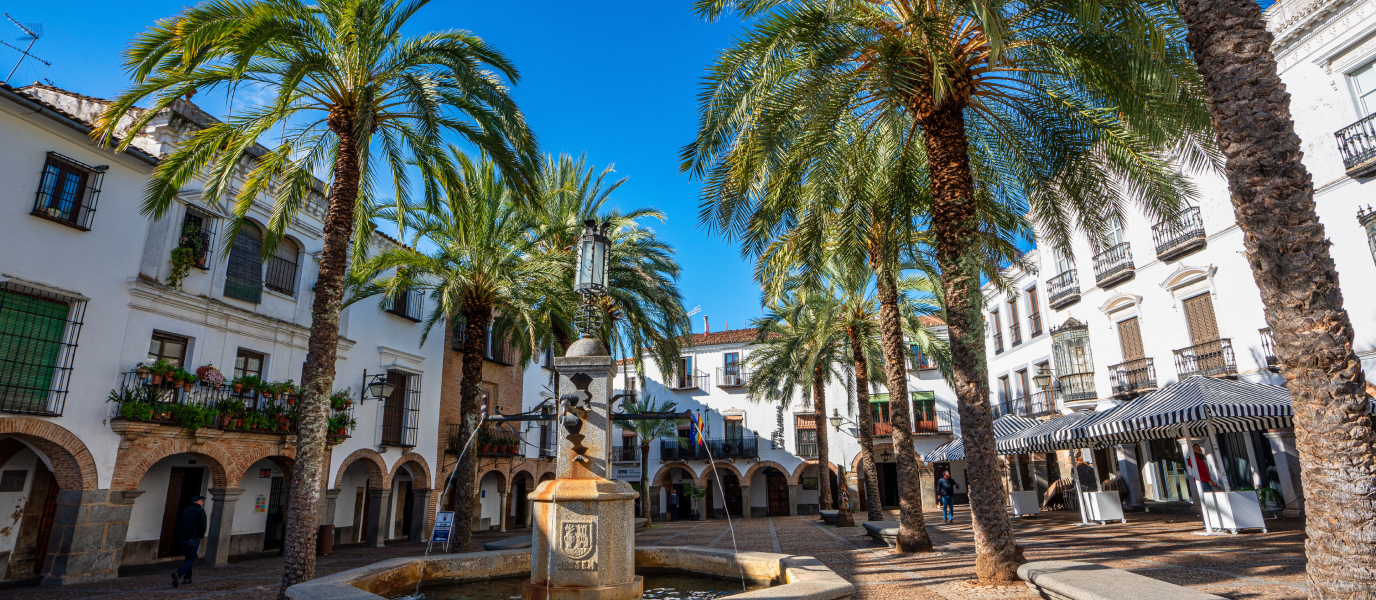Jaraíz de la Vera is located around 100 kilometres north-east of the city of Cáceres, in Extremadura. Home to one of the most popular tourist attractions in the area, Jaraíz’s natural and cultural heritage will certainly make an impression.
If you stay in Cáceres, then be sure to organise a day trip to nearby Jaraíz. Its location between the Monfragüe National Park (to the south), the Garganta de los Infiernos Natural Reserve (to the north) and Gredos Regional Park (to the north-east) gives Jaraíz an unmistakable character that makes it a jewel in the region’s crown.
La Vera is a historic county in the region of Extremadura and, as well as Jaraíz, it is also home to such notable towns and villages as Jarandilla de la Vera, Cuacos de Yuste and Garganta la Olla. It also contains the famous Carlos V hiking trail, a 25 kilometre walk from Tornavacas to Jarandilla de la Vera that commemorates the final journey of Charles V to the Yuste monastery, where he died. The Jerte Valley is also very close and offers springtime visitors the chance to see its cherry trees in bloom.
What to see in Jaraíz de la Vera, a beautiful town in Cáceres
The county of La Vera offers visitors an excellent alternative to the larger towns and cities in Cáceres and it makes for a wonderful trip any time of year. Jaraíz de la Vera is an essential stop for anybody passing through and is also an excellent hub from which to explore the region.
Thanks to its location 561 metres above sea-level, Jaraíz offers visitors spectacular views of the county and the Sierra de Gredos mountain range. The whole area surrounding Jaraíz de la Vera emanates calm and serenity, making it the perfect place to get away from the urban centres and just enjoy the beauty of nature.
A walk through the centre of Jaraíz
Jaraíz and its environs offer visitors a touristic trifecta in the form of cultural heritage, cuisine and natural beauty. If you want to really get to know the area, then make sure you add a little of each to your itinerary.
A good place to start your trip to Jaraíz would be in Plaza Mayor, an emblematic square that distinguishes itself from main squares in other cities by being made up of two distinct levels. Here you will find the Town Hall, built during the 16th century and renovated in the 20th, and many other buildings with porticoes that line the entire square. If you are lucky, you will also be there on one of the market days where they offer a cornucopia of fantastic local products.
Next to Plaza Mayor, you can find the Old Town of Jaraíz, with its quaint narrow streets and architectural gems that are only now getting the recognition they deserve.

Another curiosity of the town is a strange column known as the Picota, which symbolises Jaraíz’s independence in 1685 from the city of Plasencia. The Picota was moved from its original location in Plaza de Santa Ana to where it is now, in the Parque de los Bolos. It’s well worth a walk to see this curious column and the views of the Sierra de Gredos, Yuste and La Vera it offers from the park are excellent.
Jaraíz also has many interesting and historic churches, the oldest of which dates back to 1217. The Ermita de Nuestra Señora del Salobrar is a 17th century church that contains a statue of the patron saint of Jaraíz. The churches of Santa María de Gracia (declared a monument of Cultural Interest) and San Miguel Arcángel are both highly recommendable 15th century churches, too.
The Paprika Museum
Jaraíz is the world capital of pimiento. The paprika from la Vera is one of the best-known products to come out of Spain and it boasts a Protected Designation of Origin. In order to celebrate and publicise its paprika, the people of Jaraíz created the Paprika Museum of Jaraíz de la Vera in 2007, located in Plaza Mayor.
The museum documents the long history and the process of creating this famous spice, as well as the important role it has played in the economy of La Vera, and Extremadura as a whole. If you like Spanish cuisine, then it’s worth a visit to the museum to learn more about this fundamental spice in Spain.
Jaraíz Lake
Another of the main attractions of Jaraíz de la Vega is the lake, a beautiful natural pool in the ravine known as Garganta de Pedro Chate. A popular locale during the summer months, the area offers visitors a beach area, a terrace and other amenities you would expect at a large beach.
The appearance of ravines such as this is very common in the area, most notably in Garganta la Olla, one of the prettiest villages in the country, where people flock to take a dip in the calm waters during the hottest months of the year.
From Jaraíz to the Yuste Monastery
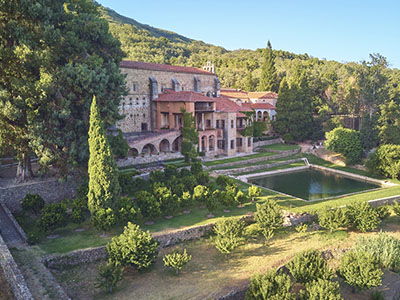
If there is one truly unmissable stop on your trip to Jaraíz de la Vera it has to be the Monastery of San Jerónimo de Yuste, located in the municipality of Cuacos de Yuste, capital of the county. For the last two years of his life, this monastery was home to the man who was the first to claim the sun never slept on his empire: Charles V of the Holy Roman Empire and 1st of his name as king of Spain. Charles V died in 1558 after travelling to Yuste from Flanders in order to cure his gout.
Yuste Monastery is categorised as a Royal Site of National Heritage and consists of two parts: the first being the convent, which was renovated in the 20th century, and the Emperor’s House, which was built in 1554 to house the emperor and his entourage. Today, one of the many rooms in this monastery is still preserved as it was when Charles V slept in it, along with his personal possessions and works of art.
Cuacos de Yuste also has another fascinating place: a German cemetery. It was in the 1980s that the German Government decided to bring together 180 bodies of German soldiers who had lost their lives on Spanish soil during the First and Second World Wars and inter them here in La Vera.
Be sure to take a look at the other articles about Cáceres to learn more about this region.
























































